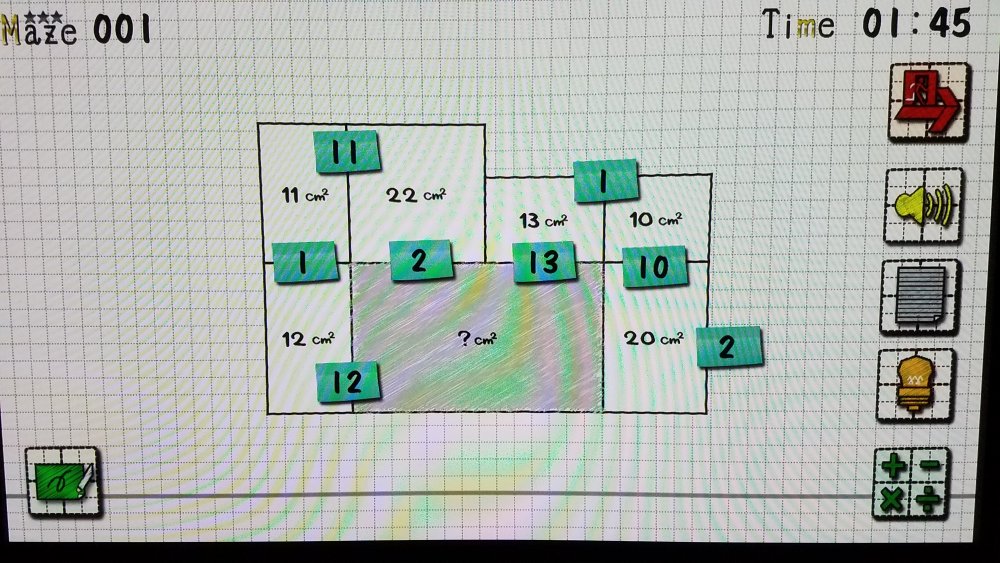Everything posted by John Salerno
-
How can I solve this menseki (area maze) puzzle?
Hi everyone. I just got a game for the Nintendo Switch called Menseki Genius, which has Area Maze puzzles in it. I've been staring at the very first puzzle for quite a while, and I'm stumped. Attached is an image of it. My initial figuring was that since the rectangles with areas 11 and 13 are prime numbers, their lengths and widths have to be 11x1 and 13x1, respectively. Working from there, I figured out some other sides, like the other side of the 22cm rectangle being 2, etc. But this isn't making complete sense, because that would make one of the sides of the 20cm rectangle 12, which has to be wrong. I've tried looking up how to solve these puzzles, but every example I've seen so far shows the puzzle with some of the full side lengths being revealed as well, but this puzzle in question doesn't show those. It only shows the areas of the rectangles. What am I doing wrong? How should I be approaching this? (FYI: no fractions or decimals are used, and the proportions are not necessarily visually accurate) Here is the image. The numbers in blue notes are my own guesses and are not a part of the original puzzle.
-
Can dogs cool off from lying in front of a fan?
So in the case of a dog, heat doesn't leave the surface of their bodies in the same way as humans (via evaporating sweat) but it still can be borne away from their bodies by cool surfaces and cool air...is that correct? I was thinking that heat only left their bodies through their tongues or feet, so that's why I didn't quite see how a cool floor or fan could help them lose heat.
-
Can dogs cool off from lying in front of a fan?
Thanks. I just wasn't sure if those things worked differently for dogs since humans have perspiring skin and dogs don't.
-
Can dogs cool off from lying in front of a fan?
I've read that dogs have sweat glands only on their tongues and the pads of their feet. So I was curious about two things I've noticed my dog (and some other dogs do): 1. When they are hot, they tend to lie on the floor instead of the carpet. Does lying on linoleum, hard wood, etc. keep them cooler? Maybe this case has nothing to do with sweating. 2. They also lie in front of a floor fan we have. This is what confused me because as far as I know, the reason fans cool off humans is because it evaporates the sweat on our skin. Since this doesn't happen for dogs, do they actually gain anything from lying in front of a fan when they're hot? Thanks.

